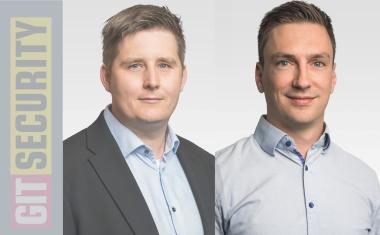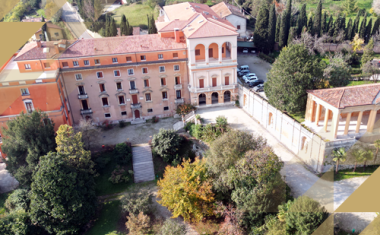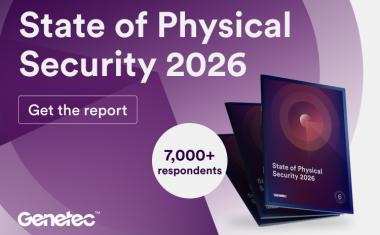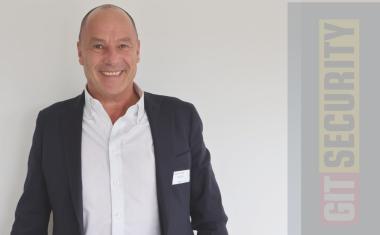Special Focus Safe Cities: Experts Explain
In our special focus, we ask three questions on Safe Cities to three experts: Philippe Henaine, Manager, Strategic Partners at i-Pro, Zak Doffman, CEO at Digital Barriers, Andreas Conrad, VP of Marketing, Physical Security at Hexagon’s
Safety, Infrastructure & Geospatial Division.
1. How can AI and new technology integrate into security solutions to keep our cities and public spaces safer?
2. What are the perils of this from a privacy and false identification perspective and how can you mitigate against these?
3. What is the most interesting safe cities project you have worked on and what was unique about your solution?
Philippe Henaine, Manager, Strategic Partners at i-Pro

1. In city surveillance, the number of cameras often exceeds operators, with scenarios like 500 cameras being monitored by 8 operators, requiring them to sometimes oversee about 100 feeds simultaneously. AI can significantly enhance this process by assisting operators in identifying relevant footage. For example, AI can prioritize feeds showing anomalies, such as wrong-way driving or unusual running, and highlight high-traffic or solitary late-night areas. By focusing on predefined scenarios and unusual activities, AI streamlines monitoring, ensuring operators spend their attention and valuable time where it’s best suited for operational efficiency and public safety.
2. AI in video surveillance assists operators by flagging relevant footage based on predefined scenarios, rather than performing direct surveillance or identification. When AI detects such a case, it highlights it to the operator, who then assesses the situation for significance. This ensures the operator controls which footage to review and makes informed judgments about the event’s criticality.
Three Core Features of i-Pro AI Analytics:
- No Personal Identification: The AI does not identify individuals; it enriches video with meta data – which can then be segmented by attributes.
- On-Site Processing: The AI operates on the edge, with all data processing conducted locally. This keeps video footage on the premises and prevents transmission externally.
- Enhanced Cybersecurity: By processing data locally and minimizing external connections, edge-AI0 enhances cybersecurity.
i-Pro is also fully committed to AI integrity, which is why we’ve established our principles about the responsible use of AI.
3. One of the most interesting safe cities projects we‘ve undertaken involved equipping the Italian local police in Gardone di Mella with our advanced multi-sensor cameras. These cameras integrate cutting-edge AI-based analytics that led to an impressive 80 % reduction in crimes within a public park. What set our approach apart was its dual focus: enhancing security through swift incident detection and response while prioritizing citizen privacy. By concentrating on relevant, non-sensitive data for notifications and analysis, we ensured effective crime prevention while respecting privacy concerns, thus demonstrating the power of AI-driven installation in public safety.
Zak Doffman, CEO at Digital Barriers

1. AI enables us to add intelligence and efficiency to the operation of existing CCTV deployments, providing immediate, game-changing advances. Gone are the days of operators staring at screens or the extent of our safe city ambitions being dictated by how many people we can have sitting in the control room. With the right connectivity and analytics in place we can rely on machines to do more of the heavy lifting and smartly alert people when there is something requiring of their attention. But the key is getting only the right information to only the right people wherever that happens to make operational sense – all in real time.
2. With the industry badging everything “AI”, it is critical that customers don’t find themselves boxed in. Organisations should first ensure they have a good understanding and internal consensus on the challenges they want analytics to help solve. This puts them in the best position to confidently select the right analytics for the use case, and to change those analytics later if they cease to perform. Equally important is the underlying architecture over which video and analytics applications are expected to run. Our own software was developed to ensure video and analytics can perform as expected over congested networks and at low bandwidths.
3. Many years ago, we deployed many thousands of cameras that delivered reliable and cost-effective live video over cellular, without impacting quality. The situational awareness this created for the city in otherwise hard to monitor areas was truly game-changing for them. Even now, what we achieved there is falsely assumed by many to be either technically or financially unviable. I’m proud to say we didn’t stop there. We are now adding AI to immediately make the whole program more intelligent, at the flick of a switch. We envisage it quickly contributing to new capabilities and efficiencies that contribute to public safety and make the city an even better place to work, live and visit.
Andreas Conrad, VP of Marketing, Physical Security at Hexagon’s Safety, Infrastructure & Geospatial Division

1. High-quality and timely video footage enables real-time incident handling and post-event investigation. Public safety organizations are now gaining direct access to, or ownership of, public space surveillance and integrating it into their public safety platform. This gives operators the ability to see what happened and monitor live situations in real time, helping them coordinate incident response and share footage with other organizations and responders in the field. On the other hand, new technologies like AI are quickly becoming a vital part of incident response. AI-based video analytics integrated into video management solutions can help detect threats and critical situations, identify and track suspects or accelerate investigations. For incidents requiring multiple agencies or organizations to respond, collaboration portals enable the sharing of information between parties, with assistive AI working in the background to find trends and anomalies that it serves up to users for further evaluation.
2. First, data collection must always adhere to local privacy laws, such as GDPR and other legislation. The systems used to protect people must be designed in a way that they can help organizations meet the relevant regulatory requirements. Second, when implementing AI or other analytic features, it is imperative that any decision-making be ultimately left to a human. AI can analyze data and support the decision-making process, but people should always be in control of decisions and outcomes.
3. We’ve worked on hundreds of smart and safe city projects around the world. Probably the most impressive city surveillance projects we are involved in are in India. The complexity of these is as much a consequence of the sheer size of these cities as of the advanced architecture and extensive integration of systems and data sources, making public safety an essential element of a smart city.












